CSAT best practices
What should you know when planning and sending out your customer satisfaction survey? How can you maximize the amount of customer feedback you get? Learn more below.... Or, if you're interested in a contact center solution that can help you gather this data and empower your agents to user it, check out Dialpad's AI-powered customer engagement platform!

Fun fact: There are best practices when it comes to collecting and using CSAT scores.
Most businesses and contact centers are familiar with CSAT surveys—it’s probably one of the most popular metrics around when it comes to monitoring your customer experience and improving your customer journey. But still, there are (surprisingly) some common mistakes that businesses make when launching CSAT surveys and using the data.
So, what should you be aware of when it comes to setting up and collecting customer feedback using CSAT surveys? Keep reading to find out.
Common CSAT survey mistakes that companies make
CSAT surveys are pretty straightforward for the most part. You can use a template if you want, and in most cases, a single question (or two) will be enough. There are really only a few important things to keep in mind when you’re running a survey. Keep these in mind and you’ll be improving your call center efficiency and providing a better customer experience in no time.
Not sending the survey at the right time
A CSAT or NPS survey have to be sent right after a customer has an interaction with you. This way, it’s still fresh in their mind and you’re getting the most accurate feedback possible.
Often, surveys get sent hours or even days after a customer's phone call or email interaction with a business. That’s too long, and by that time, they'll likely have forgotten any helpful feedback they might’ve been able to provide if asked sooner.
Relying on just the score
Open-ended customer satisfaction survey questions encourage consumers to provide feedback in their own words and give you more information about what can be improved.
CSAT surveys that ask these open-ended questions can give you much more valuable customer insights beyond just a number from the rating scale. With Dialpad, for example, supervisors can create a CSAT survey with just a few clicks:
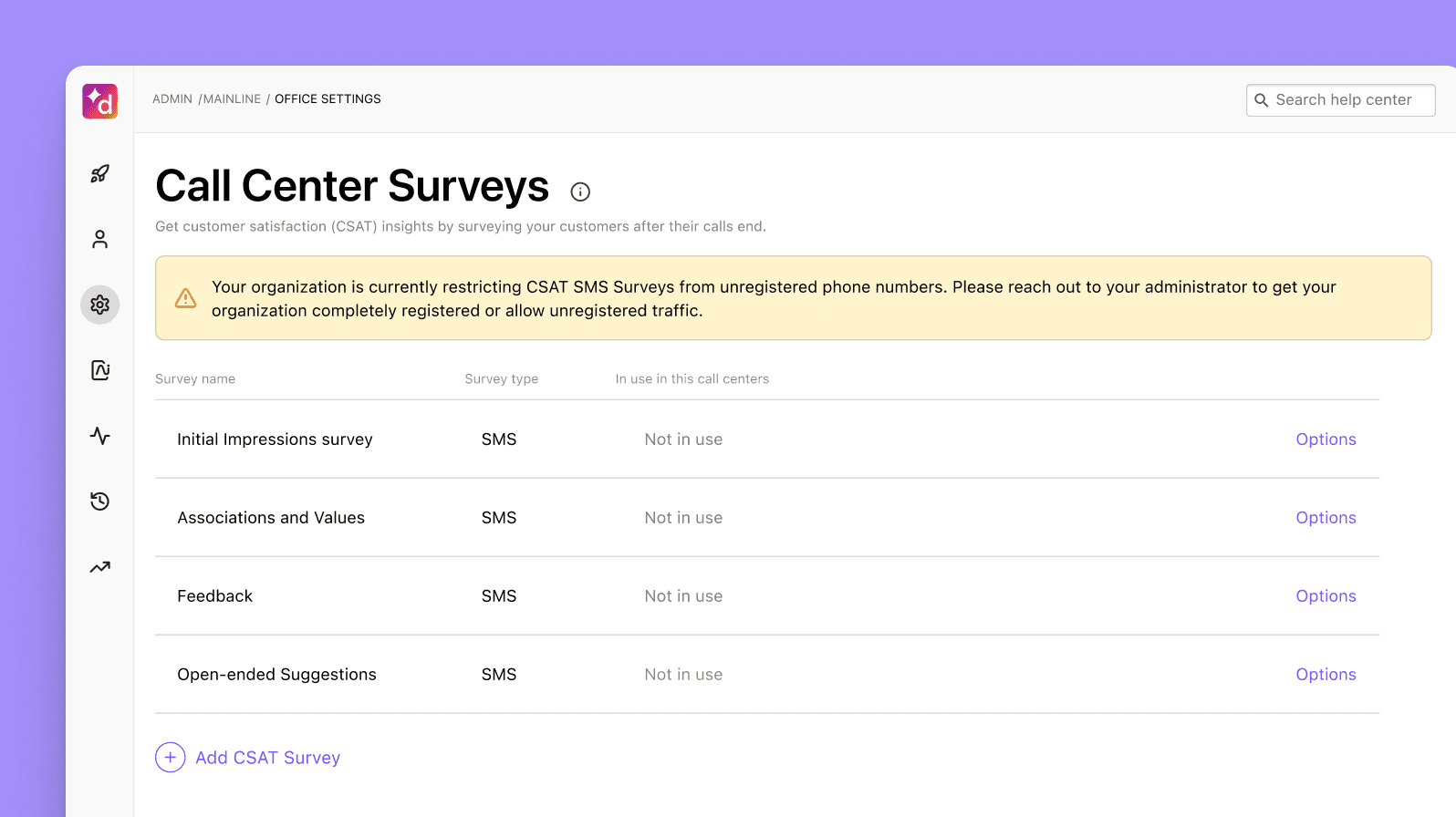
This gives us a better understanding of customer expectations and helps us take steps toward improving our CSAT scores.
Only using explicitly given feedback from customers
It’s no secret that one of the biggest challenges with collecting CSAT scores is that not a lot of people actually fill out these surveys, no matter how diligently your customer support agents ask customers to provide their feedback.
In fact (depending on the industry and specific business of course), we've found that on average only about 5% of customers actually fill out CSAT surveys. On a related note, usually only the most unhappy customers (or happier customers) actually bother to respond to these surveys, which means your CSAT answers are likely to be very skewed and not representative of how your customers feel overall.
Dialpad's industry-first Ai CSAT feature is designed to solve exactly that. Not only can our Ai transcribe calls and analyze sentiment in real time, it can also infer CSAT scores for 100% of your customer calls thanks to its hyper-accurate transcription feature. The result? A much more representative sample size for CSAT scores, and a more accurate understanding of how satisfied your customers really are:
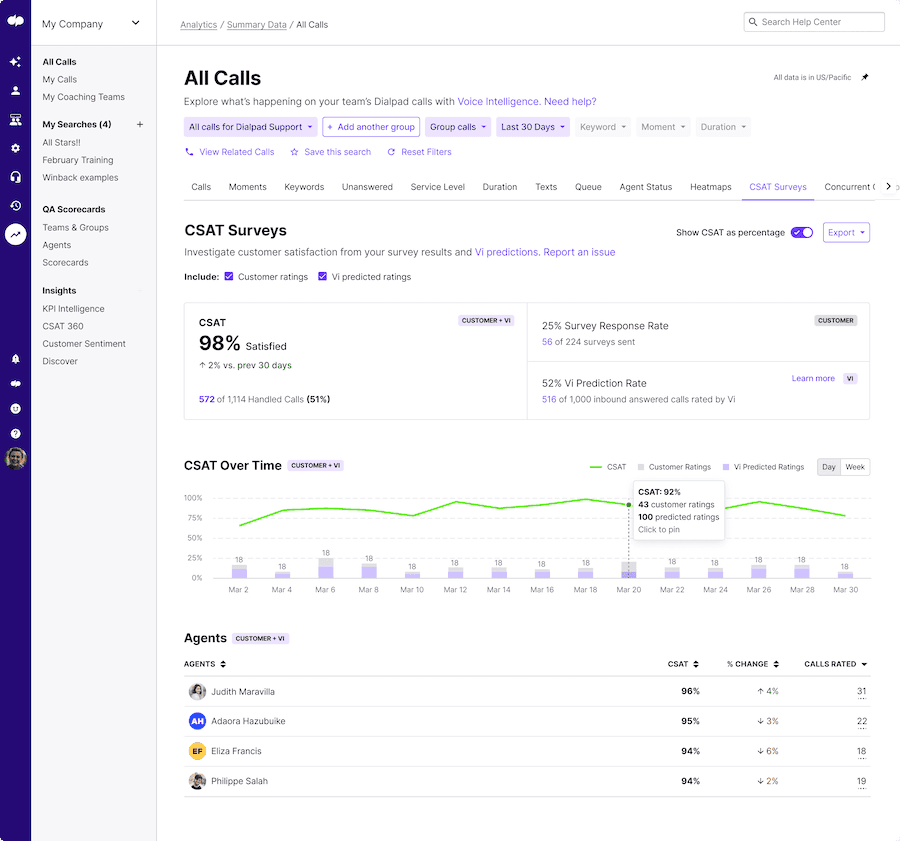
The bonus? It’s also a much fairer reflection of your agents’ performance.
Calculating your CSAT score
Typically, customer satisfaction surveys ask a single scale question: “can you rate this most recent interaction you had with our business on a scale of 1 to 5?”
Use your survey results to measure customer satisfaction.
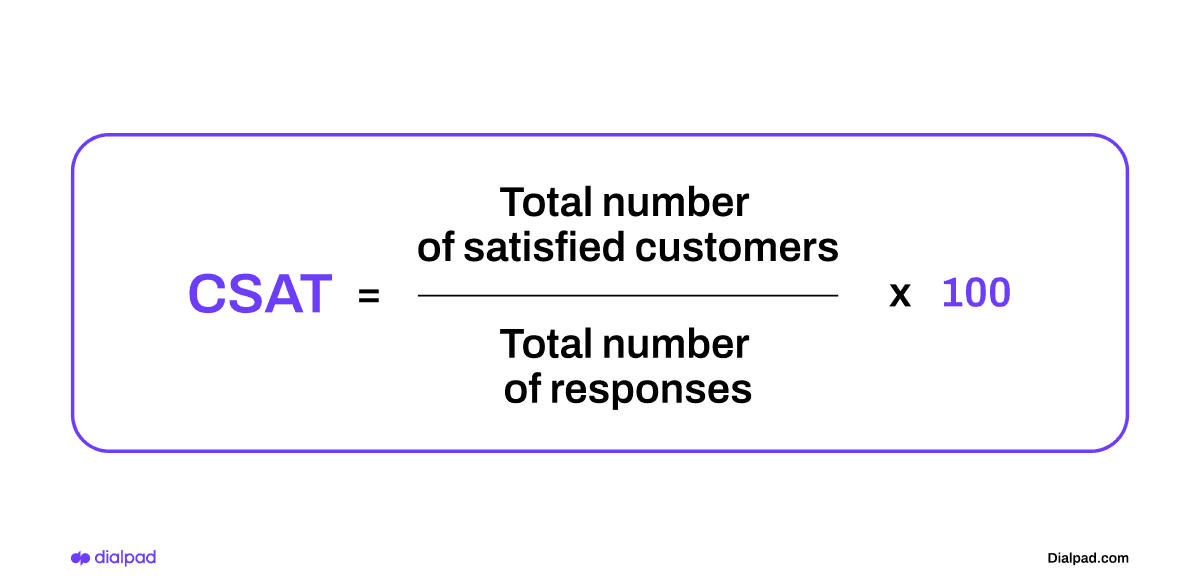
The higher your CSAT score, the better. What constitutes a “good” score varies from industry to industry. In the next section, we’ll look at a few examples of score benchmarks provided by the American Customer Satisfaction Index (ACSI).
CSAT score benchmarks according to the American Customer Satisfaction Index (ACSI)
So, you’ve sent out your customer satisfaction survey and/or used AI to get a good amount of survey results—how do you know what’s good or not? Here are some industry benchmarks to use as a measuring stick.
Restaurants: 78 - 80
Restaurants typically have high CSAT benchmarks, with full-service establishments requiring a score of 80 and limited-service restaurants, a slightly lower 78.
Customers have high expectations of restaurants, not only of the food quality but also the service. Limited-service restaurants have a lower benchmark because these typically require fewer interactions between customers and employees.
Cleaning and personal care: 79
Cleaning and personal care products also have a high CSAT benchmark. Consumers (understandably) expect the products they use to clean their homes and themselves to be of extremely high quality.
Clothing and apparel: 79
These businesses rely on positive word-of-mouth and a great brand image to help sell their products. They often pride themselves on delivering excellent customer service, as this industry sees many customer interactions about returns and refunds.
It’s no surprise, then, that the CSAT benchmark is so high in this industry. Clothing and apparel brands have to ensure that their customer service processes are efficient to keep customer satisfaction levels high.
Travel: 79
Have you ever had a holiday horror story to tell? Even if not, you’ve probably heard a few. From lost luggage to lost bookings, there are so many things that can go wrong in the travel industry and many hurdles to overcome to reach the benchmark CSAT score of 79 (which is surprisingly high given the high customer expectations and the many complaints you see on social media about the customer experience).
Having a good contact center or call center solution can be really helpful in this industry specifically because this demographic expects fast resolutions to issues (like changing flights) and customer loyalty is not a guarantee (thanks to super-cheap fares).
With an omnichannel contact center solution, agents can handle conversations across different channels like voice calls, business text messaging, and social media channels, all in one place. For example, here’s how it looks in Dialpad Support:
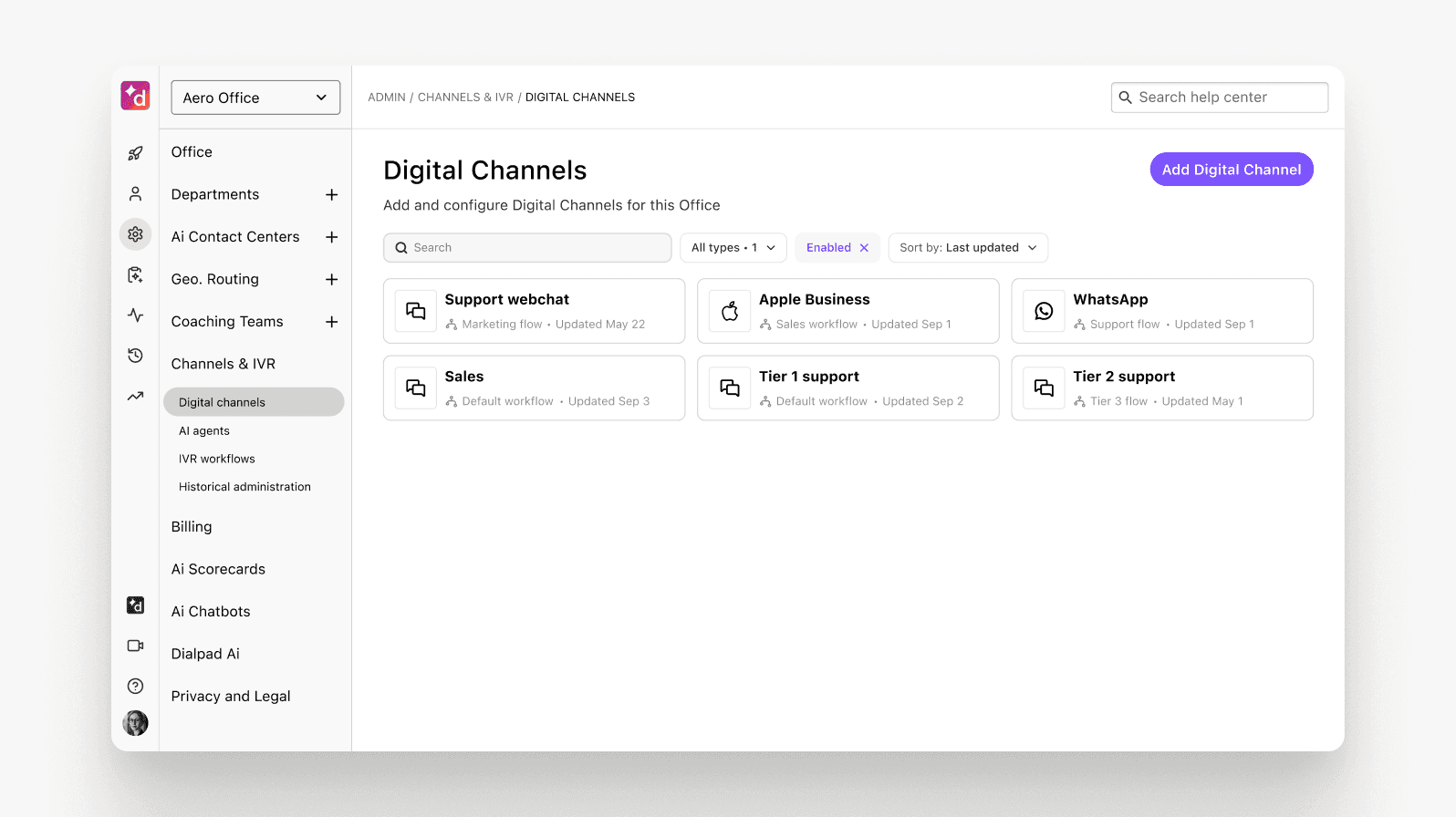
Finance: 78
CSAT scores in the finance industry are also quite high, but given the strict security and privacy requirements, it’s not too surprising. Even so, banks and other financial institutions are becoming more and more comfortable with providing customer support through digital channels like mobile apps and self-service automations, which creates a better customer experience by making it easier to do tasks like report lost or stolen cards, open new accounts, and more.
Ecommerce: 78
Ecommerce businesses usually communicate with customers over multiple platforms (email, texting, social media, and so on) throughout the various stages of the customer journey.
Having a strong tech stack and good online buying experience are non-negotiables—companies like Zappos and Amazon have really paved the way in showing what it means to be customer oriented in ecommerce. Can your customers get refunds or exchanges easily? How convenient is it for them to buy from your website?
(And for ecommerce companies that sell subscription-based products, like monthly subscriptions for pet food or coffee delivered to customers’ door, this directly impacts churn as well.)
Healthcare: 73
Healthcare features one of the lowest benchmarks of the industries on this list, and one of the reasons might be because there are many different types of healthcare providers and needs, which leads to a wide range of expectations when it comes to the customer experience—in this case, it might be more accurate to call it the patient experience.
Patient care scores are often split up by inpatient, outpatient, and emergency room experiences. When it comes to key elements that contribute to CSAT score, wait times, communication, and the effectiveness of treatment are all factors.
Creating and launching a CSAT survey: 5 best practices for measuring customer satisfaction
1. Decide which channel(s) you’ll use to run the survey
The first step to creating a CSAT survey is to decide how it’ll be distributed to your customer base or target audience.
Typically, businesses send CSAT surveys after a customer support phone call, or will text the survey to a customer after an SMS interaction—or, you might have been to McDonald’s and seen a link to a survey at the bottom of your receipt.
Bottom line: You can send surveys on almost any channel you use to communicate with customers.
2. Don’t try to ask everything
When you’re creating a customer satisfaction survey, you have to be clear and concise. Your respondents are busy, and if you send them a long survey with a convoluted list of questions, you’re probably not going to get any responses.
Have one follow-up question at most (maybe two, but that’s pushing it), and make sure your question is worded clearly.
“How would you rate this phone call / interaction with our Support team?” is a good template to use as a starting point.
3. Get responses immediately after an interaction
Generally, you should ask respondents for customer feedback at key touchpoints in the customer lifecycle, and the most accurate feedback is obtained immediately after a customer interaction.
If you wait for even a few days, the interaction will be less fresh in the customer’s mind, and this may affect the reliability of their feedback—even if it seems like a simple multiple choice or rating scale question.
So, if you’re looking for feedback on the online purchase experience, send out the survey as part of the order confirmation process. (On the other hand, if you’re looking for feedback on something like your actual product, you’ll probably want to wait a reasonable amount of time for your respondents to have had a chance to use your product first.)
Texting is probably one of the most immediate and convenient communication channels, and Dialpad’s contact center platform gives you the option to send your customer satisfaction survey via SMS too:
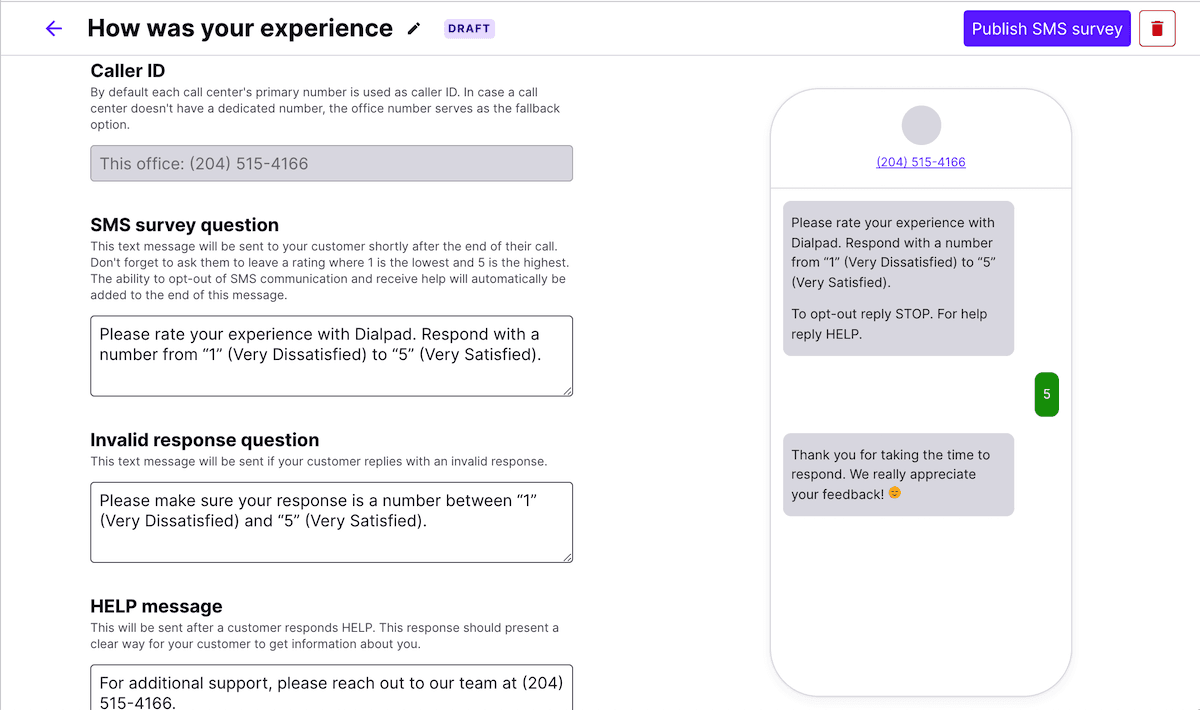
4. Entice customers with incentives to answer the survey
One simple way to increase customer satisfaction survey response rates is to offer your respondents an incentive in exchange for filling out the survey. This could be a discount code for your online store, entry into a giveaway, or credit to their account.
The aim is to increase your completion rates (without giving away too much for free). As we mentioned earlier, thanks to AI customer service tools, there are alternative ways to glean this customer intelligence—even if you don’t have a ton of survey responses.
(It may also have the added benefit of encouraging customers to make a repeat purchase much sooner than they would have, reinforcing brand loyalty and improving customer retention.)
5. Have alternative ways of collecting customer feedback
Finally, try to have an alternative way of getting feedback. CSAT surveys are great, but being feedback surveys, they still rely on customers choosing to tell you what they think. No matter what incentives you offer, you may still experience low response rates due to survey fatigue or just disinterest.
Whether it’s through a feature like Dialpad’s Ai CSAT, which analyzes sentiment and can predict customer satisfaction in real time, or some other mechanism for getting feedback, the most important thing is making sure you have other avenues of getting customer insights.
Follow these customer satisfaction survey best practices and get the most from customer interactions
Running customer satisfaction surveys regularly is a must, not only to provide a better customer experience, but also to empower your customer service team.
And if you need a cloud contact center solution that comes with AI functionality that helps you collect customer feedback and improve your customer satisfaction score, why not check out Dialpad's customer engagement platform?
It’s easy to set up from anywhere (see how Education First’s 10,000+ person team sets up contact centers in just 10 minutes), and lets you manage all the communication channels you need in one place.
See how Dialpad Ai can help you improve CSAT scores
Book yourself a personal walkthrough or, take a self-guided interactive tour of the app!
